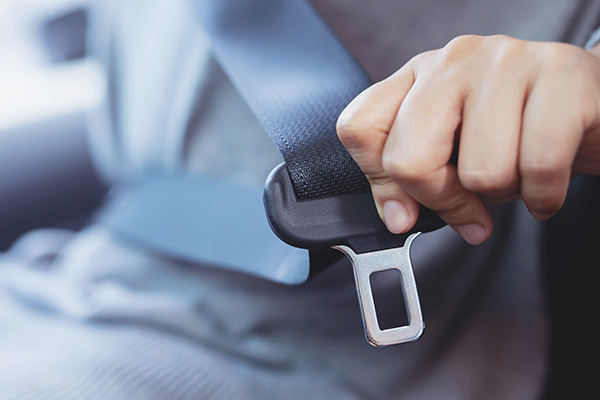
Seatbelts are more than just a legal requirement - they are a critical safety feature designed to protect you and your passengers. While it might seem like a simple action, buckling up can mean the difference between life and death in an accident. We will highlight the importance of seatbelt use, why it's mandated by law, and its undeniable impact on saving lives.
The Lifesaving Power of Seatbelts
In the event of sudden and unexpected deceleration, the forces you experience are enormous. Without a seatbelt, your body would continue moving at the vehicle's original speed, potentially causing severe injury or worse. Seatbelts are engineered to prevent this by securing you in place and distributing the forces of a collision across the strongest parts of your body.
According to the National Highway Traffic Safety Administration (NHTSA), seat belts reduce the risk of fatal injury to front-seat passengers by 45% and the risk of moderate to critical injury by 50%. These statistics are a testament to the effectiveness of seatbelts in protecting lives. They keep occupants inside the vehicle, reduce the risk of contact with the interior, and ensure that the body's deceleration is as gentle as possible.
Why Laws Mandate Seatbelt Use
You might wonder why something so simple needs to be mandated by law. The answer lies in the overwhelming evidence supporting seatbelt use as a lifesaving measure. Laws are designed to protect public health and safety, and seatbelt mandates are no exception. By requiring seat belt use, governments aim to reduce the number of injuries and fatalities on the roads.
Seat Belt laws vary by country and state, but the underlying principle remains the same - wearing a seatbelt is a simple, effective way to enhance safety. Failure to wear a seatbelt results in fines and penalties, reflecting the importance that authorities place on this safety measure. These laws also serve an educational purpose, reminding drivers and passengers of the crucial role seatbelts play in their safety.
The Evolution of Seat Belt Technology
Seatbelt technology has come a long way since its inception. Early designs were basic and uncomfortable, which contributed to resistance in their adoption. However, modern seatbelts are the result of extensive research and development aimed at maximizing comfort and safety. Features like pretensioners, load limiters, and adjustable upper belts are now standard in many vehicles, further enhancing their effectiveness.
Pretensioners tighten the seat belt immediately upon detecting a collision, removing slack and securing the occupant more effectively. Load limiters, on the other hand, allow the belt to stretch slightly during a severe crash, reducing the force on the occupant's chest and minimizing injury. These innovations work together with other safety systems, such as airbags, to provide comprehensive protection.
Addressing Common Myths About Seat Belts
Despite the clear benefits, some myths about seat belts persist. One common misconception is that seatbelts can trap you in a burning or submerged vehicle. However, these situations are extremely rare, and the benefits of wearing a seatbelt far outweigh the risks. In fact, being unbelted increases the likelihood of being knocked unconscious during a crash, making it more difficult to escape from such scenarios.
Another myth is that short trips don't require seat belts. Most accidents occur close to home, often during routine drives. Wearing a seatbelt every time you get in the car is essential, no matter the distance or destination. It's a small habit that provides significant protection.
The Psychological Aspect of Seatbelt Use
Seatbelt use is not just about physical safety but it also has a psychological component. Wearing a seatbelt can instill a sense of security and responsibility. It serves as a reminder that driving is a serious activity that requires attention and care. Encouraging consistent seatbelt use can foster a culture of safety, where every passenger automatically buckles up without hesitation.
Parents and caregivers play a crucial role in this aspect. By consistently wearing seatbelts and ensuring that their children do the same, they set a positive example that young passengers are likely to follow throughout their lives. Education campaigns and public safety announcements also contribute to changing attitudes and behaviors regarding seat belt use.
Don't wait for an accident to realize the importance of seatbelts. Visit Carmasters Automotive for a thorough safety inspection and protect your loved ones.